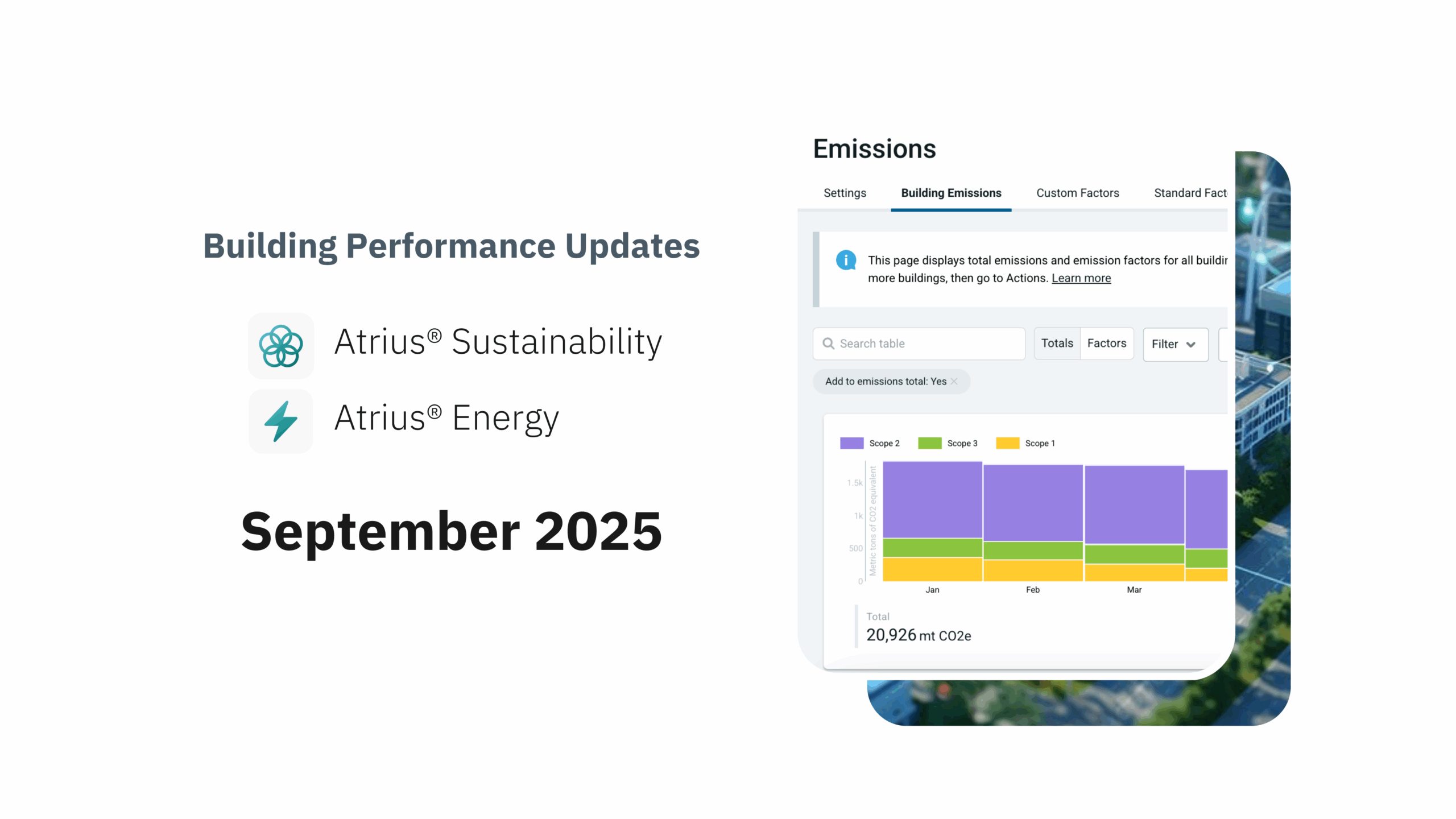This article was originally published by Facility Management.
Colleges are facing increasingly disruptive climate-change impacts that now strike very close to home. One of the most tangible changes is more frequent extreme temperatures that strain campus district energy systems and power sources. Students in residence halls that at one time didn’t require air conditioning are now experiencing 90- to 100-degree Fahrenheit days in locations like Minnesota that once enjoyed cool, mild springs. As institutions work toward overall sustainability goals, long-term thinking relies on modern, data-rich energy management tools to help create an evolving climate resilience and adaptation framework.
Since 2018, more than 100 universities have signed commitments that address the climate resilience issue. Climate resilience defines how people and organizations prepare for, adapt to, and recover from climate change events. Tactics for mitigation require a perspective that goes beyond sustainability to long-term institutional strategies for handling more severe weather, extreme temperatures, and the other intensifying effects of climate change.
Prioritizing Renewable Energy
According to a report from the National Renewable Energy Laboratory, universities decreased their energy consumption by eight percent per square foot and reduced their carbon emissions from energy consumption by 14 percent from 2007 to 2015. Since then, we’ve seen even more bold action emerge in the form of campus-wide utility master plans that move institutions away from fossil fuels to renewable sources like utility-scale solar PV and ground source (geothermal) heating and cooling.
But meanwhile, climate change impacts – rising sea levels, extreme temperatures, longer wildfire seasons, and more violent storms – are also occurring. With the threats increasing each year, all institutions must prioritize reductions in their energy footprint and a transition to renewable energy. This combination is charting a course to combat climate change, embrace strategic electrification and normalize decarbonization efforts as a primary goal of facilities capital planning.
At Carleton College, we are learning as we go. We now navigate dramatic shifts in temperatures as cold springs suddenly jump to 90-degree days – a situation that requires quick reactions from HVAC systems and operators. With our recent installation of a campus-scale geothermal heat pump, heating and cooling are combined in one piece of equipment which allows us to ride out rapid, yet short-lived, temperature changes. As we move deeper into winter heating or summer cooling seasons, we can thoughtfully prepare supplemental boilers or chillers to handle peak loads. Unified energy management tools, tying our building automation systems to our energy management practices, allow us to manage intelligently based on real-time data and identify strategies for energy efficiency and cost savings.
Utilizing Effective Data Management and Visualization Tools
To meet our goal of becoming a carbon neutral campus by 2050, Carleton College transitioned our district energy system from steam heating to low temperature (120 F) hot water and geothermal heating and cooling. This change, along with two commercial-scale wind turbines and rapid decarbonization of the public grid, have reduced Carleton’s carbon footprint by nearly 70 percent over the past decade. Comprehensive data measurement practices helped us understand how our new district energy system is benefiting building-level energy efficiency.
In our two most recent new construction projects, Carleton required zero net increase in the campus energy footprint. This means that energy consumed by a new building must not exceed the total amount of energy from buildings being demolished to make way for the new construction, despite any net increase in total campus square footage. Reliable, historical energy data allowed us to determine the new construction “energy budget” and work with our design team to stay within that target.
Thoughtful energy management practices build the foundation for short-term energy efficiency projects plus long-term plans to curb energy footprint growth and strengthen campus resilience and adaptation capabilities. The system data visualization tools tell a story about what’s happening in each building and allow Carleton to compare building performance across campus.

Creating Building Consensus Through Internal Collaboration
Having strong administration support and a willingness to provide the resources to achieve our goals has been critical to Carleton’s success. A recent energy management survey found that nearly half of the respondents reported that even when sustainable goals are mandated, resources can fall short in terms of investment and staffing.
This challenge underscores the importance of dedicated funding to help campus facilities, energy and sustainability personnel execute meaningful energy and sustainability plans. It’s commonly said that we can’t manage what we don’t measure. Powerful data archiving, data visualization and data management tools help campus energy managers align with that mantra.
A good energy management information system can quickly create useful reports, answer internal questions and forecast the full potential of sustainability efforts to help validate campus energy work and funding requests. Small successes and reliable energy intelligence also pave the way for future investments in larger, more transformational energy projects.
Climate change repercussions aren’t going away. But a wider acceptance of the urgency is driving bolder approaches to reducing reliance on carbon-based energy systems. Colleges and universities must hold ourselves accountable for modeling innovation and finding solutions to the complex challenges that we face as a society. Institutions can lead the way through forward-thinking utility plans, large-scale adoption of renewable energy and intelligent use of data and new technologies. Given what we now know about the rapid pace and extreme impacts of climate change, higher education institutions must accelerate efforts to demonstrate climate action solutions that can be replicated across society.



